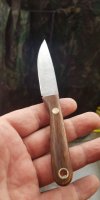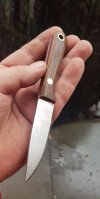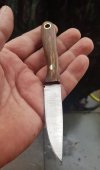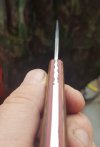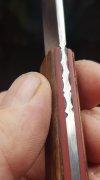A.McPherson
Knifemaker / Craftsman / Service Provider
- Joined
- Jan 27, 2012
- Messages
- 2,751
I agree with
 FredyCro
, you should finish every knife you make, or at least close to every one, when you're a beginner at least.
FredyCro
, you should finish every knife you make, or at least close to every one, when you're a beginner at least.
Even if you screw up every aspect of knife making, from forging to finishing, on a knife, it's still going to teach you something at every step.
As you go along you're also going to learn to tell what you can and can't can't fix at your current skill level.
I consider myself to be an amateur, at best, but I have learned what I can and can't fix at my current skill level, and I've got several knives that I knew I wouldn't be able to fix and so I've seen them aside until I get better, because I know they are fixable.
Fix it, or finish it as is, both will teach you things!
If you toss it, it'll only teach you what you've learned this far! Wring everything you can outta that steel before you toss it aside!
Even if you screw up every aspect of knife making, from forging to finishing, on a knife, it's still going to teach you something at every step.
As you go along you're also going to learn to tell what you can and can't can't fix at your current skill level.
I consider myself to be an amateur, at best, but I have learned what I can and can't fix at my current skill level, and I've got several knives that I knew I wouldn't be able to fix and so I've seen them aside until I get better, because I know they are fixable.
Fix it, or finish it as is, both will teach you things!
If you toss it, it'll only teach you what you've learned this far! Wring everything you can outta that steel before you toss it aside!

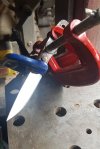
 Seems that I'm cursed to use jig
Seems that I'm cursed to use jig 









